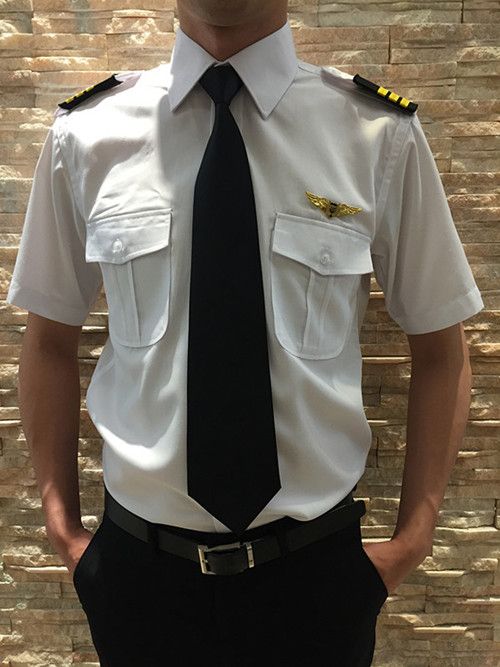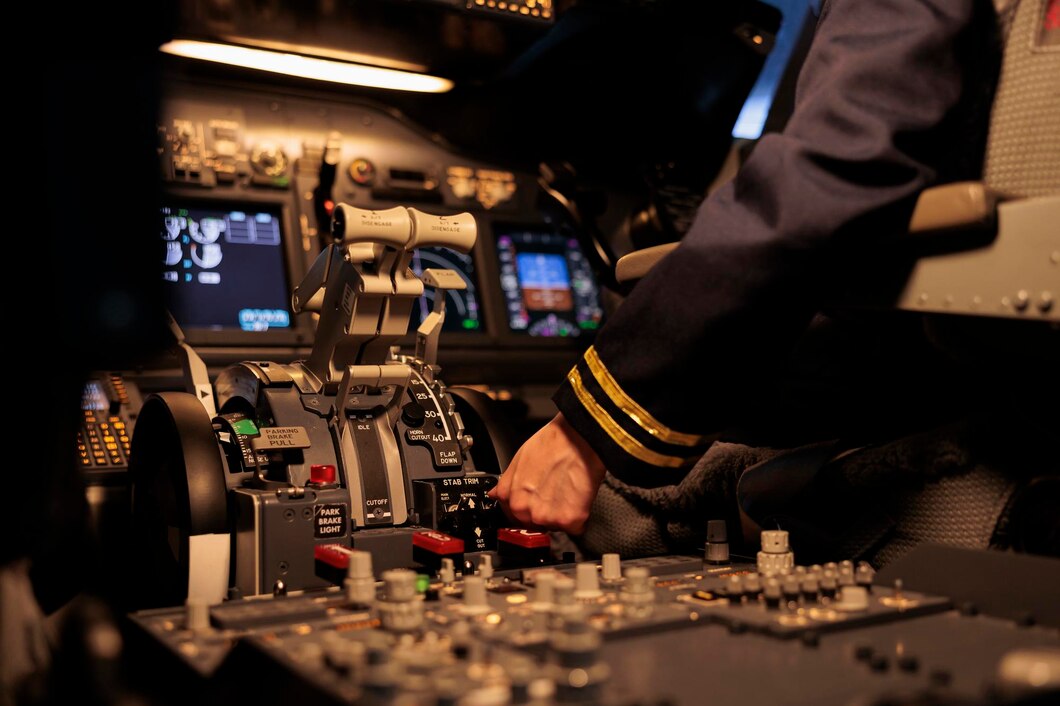Introduction: The Critical Role of Maintenance Crew Uniforms
The skilled technicians who maintain Saudi Arabia's growing fleet of commercial and private aircraft operate in some of the most demanding work environments in the aviation industry. From scorching outdoor tarmacs to climate-controlled hangars, these professionals face unique challenges that require specialized workwear solutions. As the Kingdom continues its ambitious aviation expansion under Vision 2030, the demand for high-performance maintenance crew uniforms has never been greater.
Unlike the cabin crew uniforms that often capture public attention, maintenance technician workwear prioritizes functionality, durability, and safety above aesthetic considerations. However, as Saudi airlines and aviation service providers increasingly recognize the strategic importance of a unified visual identity, maintenance uniforms are evolving to balance these practical requirements with brand representation.
This article explores the critical considerations for selecting and implementing effective maintenance crew uniforms in the unique context of Saudi Arabia's aviation sector in 2025. From advanced material technologies and climate-specific adaptations to safety compliance and organizational identity, we provide a comprehensive overview of best practices for aviation maintenance workwear.

Advanced aviation maintenance uniforms feature specialized pockets, reinforced knees, and heat-resistant materials for Saudi Arabia's demanding work environments
Unique Challenges: The Saudi Aviation Maintenance Context
Aviation maintenance personnel in Saudi Arabia face a combination of challenges that distinguish their uniform requirements from those in other regions:
Extreme Climate Conditions
Saudi Arabia's climate presents particularly demanding conditions for maintenance workers:
- Intense heat: Summer temperatures regularly exceed 45°C (113°F) in major aviation hubs like Riyadh and Jeddah
- Solar radiation: High UV exposure poses risks to both skin health and material degradation
- Dust and sand: Fine particulates can infiltrate fabrics and mechanisms, causing wear and discomfort
- Temperature variations: Significant differences between outdoor conditions and air-conditioned hangars create thermal stress
These environmental factors necessitate specialized fabric technologies and design features not typically required in more temperate regions.
Regulatory Compliance Requirements
Maintenance crew uniforms in Saudi Arabia must meet multiple overlapping standards:
- GACA requirements: The General Authority of Civil Aviation imposes specific safety standards
- International compliance: Standards from bodies like IATA and aircraft manufacturers
- Organizational protocols: Airline-specific requirements for visual identification and safety
- Cultural considerations: Appropriate design elements that respect local customs and values
Navigating this complex regulatory landscape requires careful attention to detail in uniform specification and implementation.
Operational Diversity
Maintenance crews perform varied tasks requiring different functional capabilities:
- Line maintenance: Quick turnaround work on active aircraft requiring mobility and accessibility
- Heavy maintenance: Extended work periods in hangar environments with different ergonomic needs
- Specialized systems: Work on electrical, hydraulic, or fuel systems requiring specific protective features
- Seasonal variations: Different requirements between summer and winter operations
This operational diversity often necessitates modular uniform systems rather than one-size-fits-all solutions.
Material Technologies: Beyond Basic Workwear
The 2025 generation of maintenance crew uniforms in Saudi Arabia incorporates advanced material technologies that address the unique challenges faced by aviation technicians:
Heat Management Fabrics
Given Saudi Arabia's extreme temperatures, heat management is a critical consideration:
- Advanced moisture-wicking technologies: Nanofiber structures that transport perspiration away from the body up to 70% more efficiently than traditional fabrics
- Cooling functionalities: Phase-change materials (PCMs) that absorb body heat during exertion
- Strategic ventilation: Engineered mesh zones positioned to maximize airflow without compromising safety
- Thermal regulation: Composite fabrics that provide temperature stability across varying work environments
These technologies directly impact technician comfort, safety, and productivity, with studies showing up to a 26% reduction in heat-related fatigue when using advanced cooling fabrics compared to traditional workwear.
Durability Enhancements
Maintenance work involves constant physical contact with aircraft surfaces, tools, and equipment:
- Abrasion resistance: High-performance fibers with up to 10x the durability of standard cotton at critical wear points
- Reinforced construction: Strategic reinforcement at stress points using aramid fibers
- Ripstop technologies: Specialized weave patterns that prevent tear propagation
- Chemical resistance: Finishes that protect against aviation fluids, solvents, and lubricants
These durability features extend uniform lifespan, reducing replacement frequency and total ownership costs. Saudi Airlines Maintenance Company reports that their implementation of advanced durability materials has extended average uniform life by 40% despite the challenging operating environment.
Safety-Oriented Features
Aviation maintenance environments present multiple safety hazards:
- Flame resistance: Self-extinguishing fabrics that provide crucial protection in fuel-adjacent environments
- Anti-static properties: Conductive fiber networks that prevent dangerous discharge around sensitive avionics
- High-visibility elements: Strategic reflective components for low-light operational areas
- Arc-flash protection: Specialized fabrics for personnel working with electrical systems
These safety features are increasingly engineered to perform under Saudi Arabia's specific environmental conditions, addressing concerns like effectiveness after repeated exposure to extreme heat and dust.
Ergonomic Design: Functionality in Motion
Beyond material selection, the physical design of maintenance uniforms significantly impacts technician performance. The most effective 2025 uniform programs in Saudi aviation maintenance operations incorporate sophisticated ergonomic features:
Range of Motion Engineering
Aircraft maintenance requires complex movements in confined spaces:
- Articulated joints: Pre-bent designs at elbows and knees that reduce fabric binding during movement
- Stretch panels: Strategic placement of 4-way stretch materials at mobility points
- Gusseted constructions: Expanded fabric zones in high-stress areas like crotch and underarms
- Body-mapped designs: Cut and construction that follows natural movement patterns
These features allow technicians to perform complex maintenance tasks with less restriction and fatigue. King Abdulaziz International Airport's maintenance division reported a 15% reduction in movement-related discomfort after implementing articulated uniform designs.
Task-Specific Storage Solutions
Efficient tool and component management is essential for maintenance productivity:
- Specialized pocket systems: Purpose-designed storage for common tools and components
- Secure retention: Tool tethering points and closure systems that prevent FOD (Foreign Object Damage) risks
- Accessibility mapping: Storage positioned based on frequency of use and ergonomic reach studies
- Weight distribution: Balanced pocket placement that reduces physical strain during extended wear
These storage solutions contribute directly to maintenance efficiency and safety. A time-motion study conducted at Riyadh's maintenance facilities documented an average time savings of 7.3 minutes per hour when technicians used uniforms with task-optimized storage compared to standard workwear.
Modular Adaptability
The varied tasks and environments encountered by maintenance personnel require adaptable uniform systems:
- Layering frameworks: Coordinated base, mid, and outer layers that work as integrated systems
- Detachable components: Removable sleeves, hoods, or knee pads that adapt to changing tasks
- Convertible features: Adjustable elements that modify coverage or functionality
- Seasonal variations: Coordinated warm and cool weather options that maintain consistent appearance
This modular approach is particularly valuable in Saudi Arabia, where technicians may move between extreme outdoor heat and air-conditioned hangars multiple times during a shift. Modular systems allow for rapid adaptation to these changing environmental conditions.
Visual Identity: Balancing Brand and Function
While functionality remains the primary consideration for maintenance uniforms, Saudi aviation organizations increasingly recognize the importance of visual identity consistency across all staff roles:
Brand Integration Approaches
Successful maintenance uniform programs incorporate brand elements without compromising performance:
- Color strategy: Use of brand colors in ways that accommodate workplace realities (e.g., dark base colors that hide soil)
- Strategic logo placement: Positioning of organizational identifiers where they remain visible during typical work activities
- Consistent design language: Distinctive styling elements that connect maintenance attire to broader organizational uniforms
- Finishing details: Brand-specific components like buttons, zippers, or trim that reinforce identity
These approaches allow maintenance staff to function as brand representatives even while performing technical work. Saudia Technical Services implemented a particularly effective program that uses the airline's signature green as an accent color against a practical dark base, creating instant recognition while maintaining functionality.
Role Identification Systems
Clear communication of technician specialization and authority enhances operational efficiency:
- Certification indicators: Visual systems that communicate technical qualifications
- Specialization coding: Color or badge systems that identify specific technical expertise
- Hierarchical elements: Subtle distinctions that indicate supervisory or leadership roles
- Team identification: Visual cues that associate technicians with specific maintenance units
These identification systems improve both internal communication and external interactions. When passengers observe maintenance activities from terminal windows, professional, consistent attire with clear role indicators enhances confidence in the airline's technical standards.
Cultural Considerations
Effective maintenance uniforms respect Saudi cultural context while meeting technical requirements:
- Modest design options: Variations that accommodate different personal preferences
- Traditional influences: Subtle incorporation of Saudi design elements where appropriate
- Gender-inclusive approaches: Thoughtful adaptations as more Saudi women enter technical aviation roles
- Identity respect: Name badge systems that correctly display Arabic names and titles
These cultural considerations ensure that maintenance uniforms support Saudi Arabia's evolving aviation workforce while respecting traditional values. They also contribute to staff satisfaction and retention, with surveys indicating that culturally sensitive workwear enhances feelings of belonging and professional pride.
Implementation Best Practices: Beyond Design
Even the most well-designed maintenance uniform program can fail without proper implementation. Leading Saudi aviation organizations have developed sophisticated approaches to uniform program management:
Sizing and Fit Optimization
Proper fit is critical for both comfort and safety in technical environments:
- Comprehensive sizing systems: Expanded size ranges that accommodate diverse body types
- 3D scanning technology: Digital measurement to ensure precise fit for technical garments
- Fit clinics: Professional fitting sessions prior to uniform distribution
- Alteration protocols: Standardized approaches for necessary garment modifications
These fit optimization practices significantly impact uniform performance and acceptance. When King Khalid International Airport implemented 3D scan-based sizing for their maintenance team, proper fit compliance increased from 72% to 94%, with corresponding improvements in comfort ratings and reduction in movement restrictions.
Education and Training
Technical uniforms often require specific knowledge for proper use:
- Wear protocols: Clear guidance on proper assembly of complex uniform systems
- Care instructions: Specialized cleaning and maintenance procedures for technical fabrics
- Safety feature awareness: Training on flame-resistant, anti-static, or other protective elements
- Replacement indicators: Education on when uniform items have degraded below acceptable standards
This educational component ensures that the performance features engineered into maintenance uniforms deliver their intended benefits throughout the garment lifecycle.
Lifecycle Management
Comprehensive uniform programs include end-to-end management systems:
- Inventory tracking: Digital systems that monitor uniform distribution and replacement cycles
- Condition monitoring: Regular assessment of uniform performance and condition
- Repair programs: Maintenance services that extend garment useful life
- End-of-life protocols: Responsible disposal or recycling of used uniform items
These lifecycle approaches maximize the return on uniform investment while supporting sustainability goals. Saudi Airlines Technical Division reported a 27% reduction in annual uniform costs after implementing a comprehensive lifecycle management system, despite increasing the quality of materials used.
Future Trends: The Evolution of Maintenance Uniforms
As Saudi Arabia continues its aviation sector development, several emerging trends will likely shape the next generation of maintenance crew uniforms:
Integrated Technology
The boundary between uniform and equipment is increasingly blurring:
- Wearable diagnostics: Embedded sensors that detect environmental hazards like harmful fumes or excessive heat
- Connectivity solutions: Built-in communication technologies that enhance team coordination
- Digital identification: NFC or RFID elements that interface with security and access control systems
- Augmented reality integration: Uniform elements designed to support AR maintenance guidance systems
These technological integrations promise to transform maintenance uniforms from passive garments to active tools that enhance technician capabilities and safety.
Advanced Sustainability
Environmental considerations are becoming increasingly central to uniform programs:
- Bio-based synthetics: High-performance alternatives to petroleum-derived fabrics
- Closed-loop systems: Programs where old uniforms are recycled into new ones
- Water conservation: Fabric technologies that reduce cleaning requirements and water consumption
- Carbon-neutral supply chains: Comprehensive approaches to minimizing environmental impact
These sustainability initiatives align with Saudi Arabia's broader environmental goals while delivering practical benefits like reduced resource consumption and waste management costs.
Predictive Replacement
Data-driven approaches are optimizing uniform management:
- Usage analytics: Tracking systems that monitor actual wear patterns
- Predictive algorithms: AI-based forecasting of replacement needs before failure occurs
- Individual optimization: Customized replacement schedules based on specific job functions
- Performance mapping: Data collection on how uniform features perform in real-world conditions
These approaches enable more precise management of uniform resources, ensuring technicians always have workwear that meets safety and functionality requirements without unnecessary waste.
Conclusion: Strategic Advantage Through Thoughtful Uniform Programs
For Saudi Arabia's rapidly expanding aviation maintenance sector, crew uniforms represent far more than standard workwear—they are strategic tools that directly impact safety, efficiency, brand perception, and staff satisfaction. The most successful organizations have moved beyond viewing uniforms as a commodity purchase, instead developing comprehensive programs that balance multiple considerations:
- Material technologies that address Saudi Arabia's unique climate challenges
- Ergonomic designs that enhance technician mobility and efficiency
- Safety features that protect staff in demanding maintenance environments
- Visual identity elements that connect technical teams to broader organizational branding
- Implementation systems that ensure proper fit, care, and lifecycle management
As the Kingdom continues its aviation sector development under Vision 2030, these sophisticated approaches to maintenance crew uniforms will play an increasingly important role in establishing Saudi maintenance operations as world-class services that combine technical excellence with operational efficiency.
For aviation maintenance organizations, the message is clear: investing in well-designed, purpose-built uniform programs delivers measurable returns through enhanced safety, improved efficiency, extended service life, and strengthened organizational identity. In the competitive global aviation market, these advantages contribute directly to service quality and business success.


